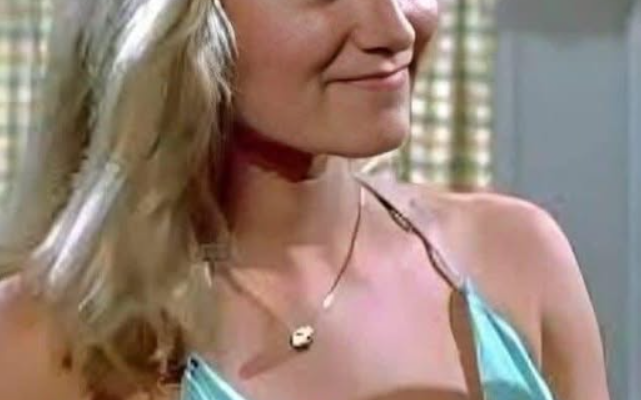Camel Toe Might Be the Best: A Surprising Perspective on a Taboo Topic
When it comes to fashion mishaps, few things generate as much whispered gossip, awkward glances, and internet memes as the infamous “camel toe.” For those unfamiliar with the term (though let’s be honest, you probably know exactly what I’m talking about), it refers to the visible outline of a woman’s intimate area when her clothing fits just a little too snugly. Traditionally, it’s been considered something to avoid at all costs — a wardrobe malfunction that fashion magazines and social media style accounts often warn against. But what if this so-called fashion faux pas isn’t the embarrassing catastrophe it’s made out to be? What if, in certain ways, camel toe might actually be… the best?
Before you roll your eyes, hear me out.
The Double Standard of Clothing “Malfunctions”
Fashion history is filled with “mistakes” that later became trends. Ripped jeans were once a sign you couldn’t afford new clothes, and now they’re a staple of streetwear. Off-the-shoulder tops were once considered indecent, now they’re seen as chic and romantic. Even visible bra straps, once a major etiquette no-no, became a deliberate styling choice for celebrities and influencers.
Camel toe, however, has yet to be embraced in quite the same way. In Western fashion, it’s usually treated as an accident, something to smooth out or cover up. But if you take a closer look at cultural attitudes and fashion evolution, you’ll see that this “problem” might just be another example of society policing women’s bodies under the guise of “style rules.”
Confidence Is the Real Trendsetter
In many cases, camel toe isn’t a sign of poor taste — it’s simply a byproduct of athletic wear, swimsuits, or fashion choices that celebrate body confidence. High-cut bikinis, yoga pants, and certain jumpsuits naturally fit close to the body. For women who aren’t ashamed of their natural shape, a hint of camel toe can be less of a disaster and more of a statement: This is my body. It exists. And I’m not apologizing for it.
Consider how many sports stars, dancers, and gym enthusiasts wear form-fitting leggings or leotards. Camel toe, in those contexts, is often inevitable. Yet these women are celebrated for their strength, fitness, and discipline — not shamed for how their clothes fit.
A Body-Positive Reframe
The biggest reason camel toe gets such a bad rap is because it draws attention to a part of the female body that has been surrounded by taboos for centuries. We can plaster billboards with cleavage or sculpted abs, but hint at the outline of a woman’s pelvis and suddenly it’s a scandal. This says less about camel toe itself and more about our discomfort with female anatomy in everyday life.
Body-positive advocates argue that normalizing the reality of our shapes — all of our shapes — is key to undoing this stigma. In that light, camel toe could be seen as a harmless, natural result of wearing modern clothes rather than a moral failing.
Fashion Forward: When Designers Embrace the Risk
Interestingly, some designers have leaned into this. High-cut bodysuits in the 80s and 90s, often worn by pop icons like Jane Fonda, Madonna, or aerobics instructors on TV, regularly produced camel toe. Today, certain swimwear and activewear brands have been accused (or praised, depending on your perspective) of cutting their garments in ways that enhance rather than hide the effect.
The recent explosion of ultra-form-fitting gym leggings has pushed this even further. Some brands even use seam placement to highlight natural curves — including the front. And while they don’t market them as “camel toe creators,” the designs make it clear that they aren’t exactly trying to prevent it either.
Pop Culture Moments
Camel toe has popped up (sometimes literally) in pop culture for decades, occasionally becoming the focus of paparazzi shots or tabloid covers. Celebrities from Kim Kardashian to Jennifer Lopez have been photographed in outfits that reveal a hint of it. Often, these images generate online debate: is it a fashion fail or a bold “I don’t care” moment?
What’s fascinating is how often these supposed slip-ups actually boost conversation — and sometimes even sales — for the brand or designer involved. Whether intentional or not, the so-called “embarrassment” becomes free publicity.
The “Best” Depends on Perspective
Now, to be clear, no one is saying camel toe has to be embraced. Clothing comfort is personal. If you dislike the look, there are countless ways to avoid it — thicker fabrics, looser fits, and certain undergarments can help. But if someone chooses not to hide it, that shouldn’t automatically be read as sloppy or shameful.
Why “the best”? Because in a world where women are constantly told to tweak, hide, or reshape their natural forms to meet a standard, camel toe — unapologetic and unfiltered — can be a subtle rebellion. It’s a reminder that bodies have texture, curves, and lines that aren’t always “magazine smooth.” And for some, owning that reality instead of fighting it is incredibly freeing.
From Taboo to Trend?
Could camel toe ever become a deliberate fashion statement? It’s possible. We’ve seen similar shifts before. Sheer tops and visible nipples, once unthinkable in mainstream fashion, have been normalized on runways and red carpets. “Free the Nipple” became a movement. And while camel toe has a different cultural baggage, fashion thrives on shock value and subversion. What’s scandalous today can be next season’s must-have.
If that happens, expect social media to lead the charge — TikTok and Instagram already play huge roles in breaking down old style taboos. Influencers unafraid to post workout videos, swimsuit try-ons, or outfit-of-the-day clips without editing out camel toe could slowly shift public perception.
The Final Word
Ultimately, whether you think camel toe is a total fashion fail or a badge of body confidence comes down to personal taste and cultural conditioning. The knee-jerk reaction to label it “bad” says more about our learned discomfort with the human body than about the outfit itself.
So yes, in the right context, with the right mindset, camel toe might actually be the best — not because it’s universally flattering, but because it challenges outdated rules about how women “should” look. Like any other so-called flaw, it has the potential to transform from a point of insecurity into a symbol of comfort in one’s own skin.
In the end, the “best” thing about camel toe might be that it sparks conversation — about fashion, confidence, and the many ways we navigate body image in the modern world. And if that conversation helps even a few people feel less shame about their natural shape, then maybe it’s not a malfunction at all… maybe it’s just fashion doing what fashion does best: making us look twice, think twice, and see things in a new way.

